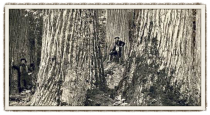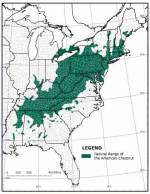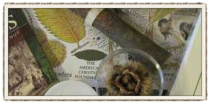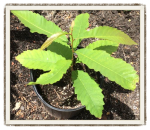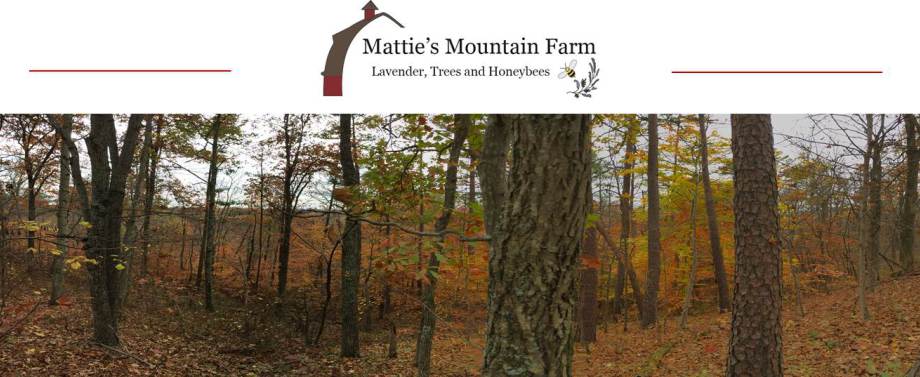
Restoration of The American Chestnut Tree
The owners of Mattie's Mountain Farm are committed to help restore the American Chestnut tree that was devasted by the chestnut blight, a fungal disease. Scientifically known as Cryphonectria parasitica, the Chestnut blight was inadvertently introduced to the United States as a result of imported Chestnut trees from China and Japan beginning in the mid to late 1800s. The fungal pathogen spread rapidly through the American Chestnut population and by 1950 it had killed virtually all the mature trees in the United States.
As a result of timber harvests and the blight devastation, there are no living American Chestnut trees currently on the grounds a Mattie's Mountain Farm. Consequently, the owners are dedicated to lending assistance to reintroduce the American Chestnut tree to Mattie's Mountain Farm and southeastern Ohio. In an effort to help restore this once great tree to the forest, the owners identified a tract of land at Mattie's Mountain Farm where they plan to establish an orchard containing American Chestnut trees.
Working with experts such as their Forester from New Growth Forestry, LLC and the The American Chestnut Foundation (TACF), the owners hope to reestablish the presence of the American Chestnut tree on the grounds of Mattie's Mountain Farm. As the map indicates, Mattie's Mountain Farm is located in the natural range of the American Chestnut tree and should be suitable to reestablish its presence in the forest. Given the sensitivities of the American Chestnut tree to blight and mammals, this effort will span several years to successfully complete.
The owners are in consultations with experts to determine how best to reintroduce the American Chestnut tree to Mattie's Mountain Farm. The TACF hasdone exceptional work with leveraging DNA from the Chinese Chestnut tree to help strengthen the American Chestnut tree's resistance to the Chestnut blight. The Chinese Chestnut is a carrier of the blight that infected the American Chestnut tree but it possesses a resistance to the Chestnut blight.
There are reportedly American Chestnut trees in North America that have not been infected with the Chestnut blight. Some believe trees in these old forest stands are immune to the blight while others believe these trees have simply not been exposed. As a result, the TACF is experimenting with a concept to inoculate the American Chestnut tree with a low dose of the Chestnut blight to help strengthen a tree's resistance. This serves a vaccine and may proveto help maintain the American Chestnut tree and ultimately restore it to its greatness.
At Mattie's Mountain Farm, the project to reintroduce the American Chestnut tree will be accomplished in several phases which are addressed below:
Phase 1: Study & Investigate
- Identify a suitable tract to establish the American Chestnut tree
- In consultation with experts, determine trees appropriate for planting
Phase 2: Site Preparation
- Clear the identified tract of land and remove all stumps
- Till the soil
- Add necessary nutirents to imiprove soil quality
- Spray to eradicate invasive plant species (Multi-Floral Rose and Grapvine)
- Establish perimeter fencing
- Establish irrigation system
Phase 3: Plant & Protect
- Select and order seedlings
- Create planting grid (trees spaced 20 feet apart in rows and 20 feet apart in columns)
- Plant trees
- Install tree protection tubes
You can read more about the American Chestnut tree from the Ohio Department of Natural Resources by clicking here.
Copyright © 2015 by Mattie's Mountain Farm - All Rights Reserved.
